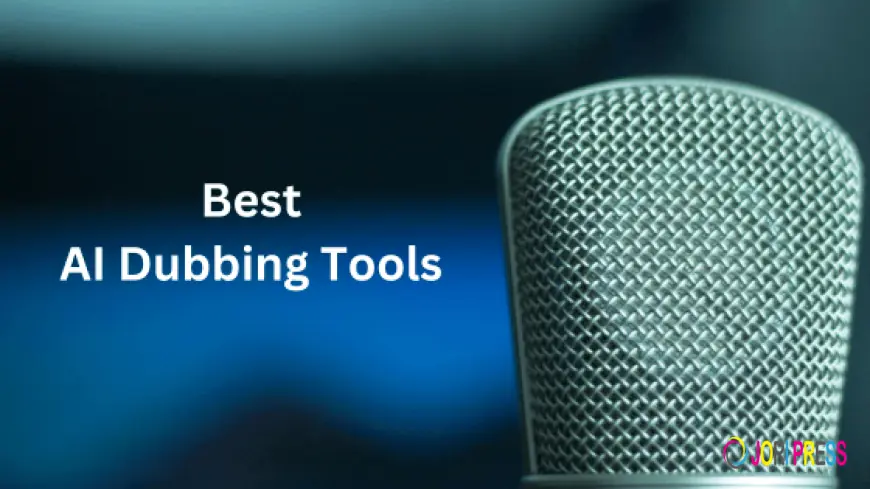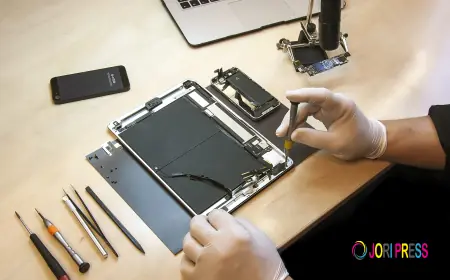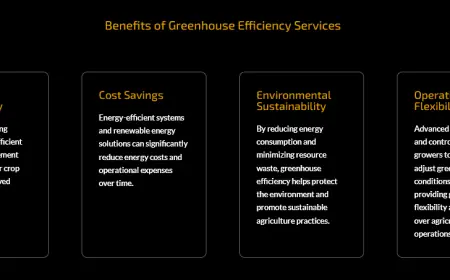Step-by-Step Guide: How to Use the Best AI Dubbing Tools in 2025

The digital content landscape is evolving at lightning speed, and one of the most exciting advancements is the rise of AI dubbing tools. By 2025, these technologies have become smarter, faster, and more accessible, offering creators, businesses, and educators an easy way to break language barriers. Instead of spending weeks and thousands of dollars hiring professional studios and voice actors, content can now be dubbed into multiple languages within minutes—while maintaining voice consistency, tone, and even emotion.
This guide walks you through a step-by-step process of using the best AI dubbing tools in 2025, from setup to execution. Whether you’re a solo YouTuber, an enterprise streaming service, or an educator localizing e-learning courses, these steps will help you make the most of modern dubbing technology.
Why Use AI Dubbing in 2025?
Before diving into the steps, let’s quickly look at why AI dubbing has become indispensable:
-
Speed: Content can be dubbed in minutes instead of weeks.
-
Cost Efficiency: No need to hire multiple voice actors or rent studios.
-
Scalability: You can translate and dub content into dozens of languages simultaneously.
-
Consistency: The same voice style and tone are maintained across languages.
-
Accessibility: Even small creators can use AI dubbing tools 2025 to reach global audiences affordably.
Step 1: Choose the Right AI Dubbing Tool
The first and most crucial step is selecting the right platform. The market in 2025 offers a wide variety of tools, each with unique strengths. Some are enterprise-focused with advanced customization, while others are budget-friendly and designed for individual creators.
When evaluating options, consider the following:
-
Languages Supported: Ensure the tool supports the target languages you need.
-
Voice Quality: Look for tools that offer emotional nuance and natural speech.
-
Customization: Can you adjust pitch, tone, or style to match your brand?
-
Integration: Does it work with your preferred platforms (YouTube, LMS, or streaming services)?
-
Pricing: Subscription vs pay-per-use models.
Some of the top AI dubbing tools 2025 also allow voice cloning, so you can keep your original voice while translating it into another language.
Step 2: Upload Your Content
Once you’ve chosen your dubbing tool, the next step is uploading your content. Most tools accept:
-
Video files (MP4, MOV, AVI)
-
Audio files (MP3, WAV)
-
Scripts or text documents
Pro tip: Always upload the highest-quality version of your content to ensure clear transcription and accurate lip-syncing.
Step 3: Generate or Upload the Script
Most AI dubbing platforms begin with speech-to-text transcription. They analyze your video or audio, transcribe the spoken content, and generate a script.
At this stage, you can:
-
Review the transcription for accuracy.
-
Edit any terms, jargon, or proper nouns.
-
Upload your own pre-written script for better control.
Correcting the script early ensures the dubbed output is accurate and culturally appropriate.
Step 4: Select Target Languages
Next, choose the languages you want to dub into. By 2025, many tools support over 50 languages, including major ones like English, Spanish, French, Mandarin, and Arabic, as well as regional dialects.
Some advanced AI dubbing tools 2025 even allow dialect-specific dubs, ensuring that your content resonates with audiences in Latin America versus Spain, or with French speakers in Canada versus France.
Step 5: Customize the Voices
Here’s where AI dubbing truly shines. You can:
-
Select from pre-built AI voices that sound natural.
-
Clone your original voice for multi-language consistency.
-
Adjust tone, pitch, and pacing for emotional depth.
For example, a business training video might use a professional and steady tone, while an animated video might require playful, energetic voices.
Step 6: Apply Lip-Syncing and Audio Matching
One of the biggest challenges in dubbing is syncing the new voice with lip movements in the video. In 2025, AI tools handle this seamlessly.
Features to look for:
-
Auto lip-syncing: Matches translated speech to on-screen actors.
-
Timing adjustment: Ensures dialogue fits scene pacing.
-
Background sound balancing: Keeps music and sound effects clear without overpowering voices.
This step ensures that your dubbed video feels natural rather than robotic.
Step 7: Review and Edit the Output
Even with advanced AI, human review remains essential. Once the dubbed version is generated:
-
Play back the video to check accuracy.
-
Listen for emotional flow—does the tone feel authentic?
-
Adjust script translations if cultural nuances are off.
-
Fine-tune voice settings where needed.
Many AI dubbing tools 2025 offer editing dashboards where you can make real-time adjustments.
Step 8: Export and Share
When you’re satisfied, export your final dubbed video or audio. Most platforms support multiple formats (MP4, MP3, WAV) and allow direct uploads to platforms like YouTube, Vimeo, or LMS systems.
Pro tip: Export versions for different platforms (1080p for YouTube, lower resolution for mobile apps) to ensure smooth playback across devices.
Best Practices for Using AI Dubbing Tools in 2025
-
Localize, Don’t Just Translate: AI tools handle literal translation well, but cultural adaptation is key. Always review for idiomatic expressions and local references.
-
Maintain Brand Consistency: If possible, use voice cloning to preserve your brand’s identity across languages.
-
Combine AI + Human Touch: AI gets you 90% of the way. Human editors ensure nuance, accuracy, and cultural sensitivity.
-
Leverage Analytics: Many tools provide insights into audience engagement across languages. Use this data to refine your localization strategy.
The Future of AI Dubbing Beyond 2025
As impressive as AI dubbing is today, the next wave promises even more:
-
Real-Time AI Dubbing: Live streams and events dubbed instantly into multiple languages.
-
Hyper-Personalization: Content tailored to regional dialects, slang, and cultural context.
-
Voice Ownership Protections: Blockchain will ensure creators control how their cloned voices are used.
-
Integration with AR/VR: Immersive dubbing for metaverse and virtual training environments.
By 2030, dubbing may become so seamless that viewers can toggle between languages instantly, with voices adapting in real time.
Conclusion
AI dubbing has come a long way, and by 2025, it has become a game-changer for content creators and enterprises alike. The process—from uploading your video to exporting a polished, localized version—is now faster, cheaper, and more accurate than ever.
By following this step-by-step guide, you can unlock the full potential of AI dubbing tools 2025, reaching global audiences without losing the authenticity of your voice. For creators, brands, and educators, these tools are no longer just convenient—they’re essential for staying competitive in a multilingual, digital-first world.
What's Your Reaction?
 Like
0
Like
0
 Dislike
0
Dislike
0
 Love
0
Love
0
 Funny
0
Funny
0
 Angry
0
Angry
0
 Sad
0
Sad
0
 Wow
0
Wow
0



















































